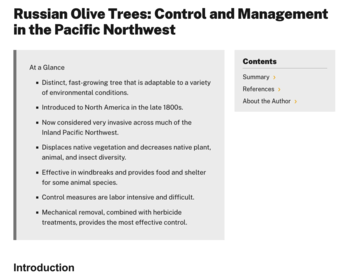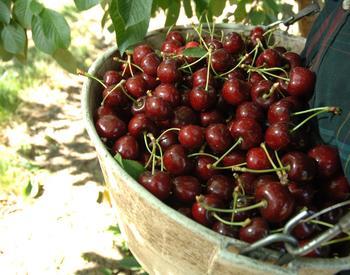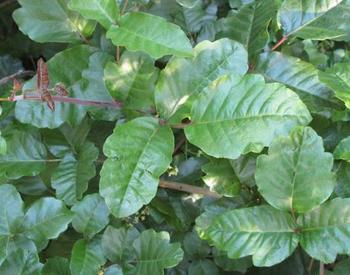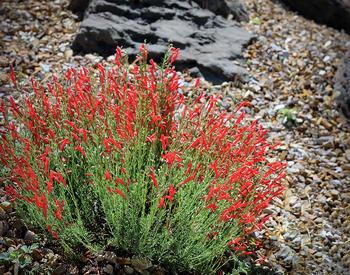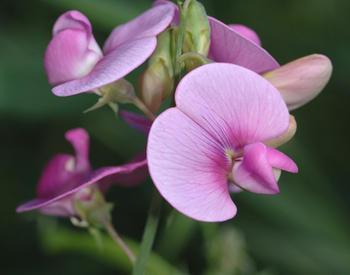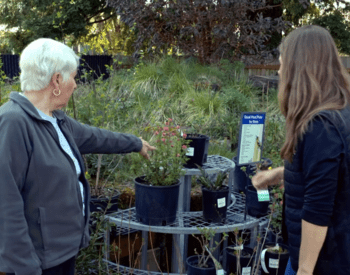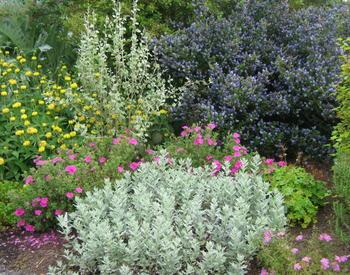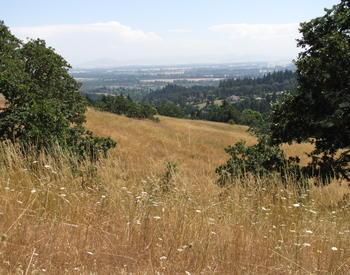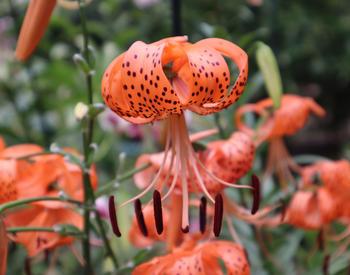Poison oak leaves have three leaflets, hence the saying "leaves of three, let it be." The leaflets vary in size, shape and color but generally resemble scrub oak leaves. They are larger in the shade (up to 6 inches) than in the sun. Leaf margins are wavy and may have lobes. Early in the season, leaves are a bright, shiny green but turn yellow and red in the fall. Poison oak has three main growth forms:
- As an upright shrub.
- As a ground-hugging shrub.
- As a climbing, clinging vine.
Getting rid of poison oak
Poison oak will resprout readily if mowed or cut. In small areas with moist, loose soil, the roots can be dug out. But avoid grubbing in dry or rocky soil because the roots break easily and will resprout from root fragments. Goats, sheep and other animals will browse poison oak but the plants will come back.
Herbicides that kill poison oak include glyphosate (Roundup, Accord and Glypro are three common commercial varieties) and triclopyr (Garlon). Glyphosate is most effective when applied late in the season when the leaves are still green but the plants have fruited. Use triclopyr early in the season. Repeat applications will probably be necessary. Follow all label directions. You can spray the foliage or apply the chemical on freshly cut stems.
I’m starting to itch!
All parts of the plant — leaves, stems, roots, flowers and fruits — contain the poisonous oil urushiol (“oo-roo-she-all”), which can cause a severe rash if it gets on the skin. Urushiol is potent and stays active for years.
Urushiol binds with skin proteins within 10–15 minutes, making it difficult to remove.
Regular soap and water will not remove urushiol but will spread around the rash-causing substance. Even the tiniest particle of urushiol on the skin can cause a severe reaction. The late biochemist Robert Smith, who developed a cleanser that effectively removed urushiol, once said the amount of urushiol that would fit on the tip of a needle is enough to give 100 people the rash.
Urushiol can also contaminate gear and clothing. Wildland firefighters often develop poison oak or poison ivy rashes because the burning plants release billions of urushiol particles in the smoke that contaminates firefighters and their gear.
Most people don’t react to urushiol immediately. The reaction time varies from six to eight hours and up to three days before the rash occurs. The ultra-sensitive may react sooner. This delay provides an opportunity to remove urushiol from the skin before a rash develops or becomes severe.
Removing poison oak oil
There are three options:
- Soap and water: Helpful within 10 minutes after exposure. Fels Naptha soap works well. Soap and water are helpful on clothing washed in a laundry machine.
- Tecnu Original: This is a commercial liquid skin cleanser developed by Smith. It can be applied directly to skin or gear. OSU pharmacist J. Mark Christensen explains that Tecnu breaks urushiol's bond with the skin and can be used with or without water. Without water, rub Tecnu around aggressively and then wipe it off with a cloth or paper towel. Scraping off the used Tecnu (and urushiol) with one’s hand can be helpful in extreme situations.
- Tecnu Extreme: This product was developed in 2005 and has micro-fine scrubbing beads and special surfactants to remove embedded urushiol from the skin. It's the best choice if there is access to water. Tecnu Extreme can prevent a rash, stop the itching, or stop an existing rash from spreading. Tecnu Extreme used within eight hours after exposure to urushiol can prevent a rash. Carefully wash areas where the skin creases such as behind the knees, the bend at the elbow, or around fingers because urushiol accumulates in these areas.
Decontaminating tools
Apply Tecnu Original full strength to a cloth or directly onto the tool and wipe it down.
After two minutes rinse or wipe off with a clean towel. Other products available to remove resins from tools should work, too. Porous, synthetic handles may be compromised by Tecnu, so test a small area before coating the item.
Removing urushiol from fibers in clothing and gear
Gear or clothing contaminated by urushiol is a concern because a person coming in contact with it can be recontaminated. Tecnu also removes urushiol from fabric fibers in clothing and gear.
Removing urushiol from pant cuffs glove rims
Urushiol accumulates around wrists even when you wear gloves and a long-sleeve shirt. When working around poison oak, saturate cuffs with Tecnu and massage the fabric twice a day. After two minutes, rinse off the cuff or glove rim with water. This is crucial because the wrist has tender skin that is receptive to the rash and so can be easily recontaminated.
Urushiol is like a resin. Heat and perspiration work as a vehicle to transfer it. It will move from gloves to the hand and upper arm. Forearms and hands should be regularly treated with Tecnu Original or Tecnu Extreme.
Removing Urushiol from shared gear
Urushiol present on overgarments can contaminate a person coming in contact with the clothing at a later date. Tecnu doesn’t have a product that addresses this, so use a degreasing type detergent and hot water. Keep contaminated articles separate from other laundry.
Stop the rash from spreading
Urushiol spreads over the body by different means. The severity and spreading of the rash can be lessened if Tecnu Extreme is used quickly to remove any remaining urushiol that is on the body.Treating as much skin as possible the moment it is noticed (best is a full body wash in a shower) can dramatically reduce the severity of the reaction and contain the rash before it becomes fully realized and debilitating. An untreated rash can take weeks to overcome.
Tecnu Extreme has an active ingredient to help with the itching and healing. Tecnu Original is a cleanser and does not have this active ingredient, although Tecnu Original may help remove urushiol after a rash appears.
Healing the rash
Using a topical product for drying up rashes can help the healing process. Tecnu makes a product called Calagel. There are other products on the market. You may already have something you like or that an occupational nurse may recommend (i.e. Benadryl, etc.) Calagel is unusual in that it has an antiseptic and a skin protectant added to it.

